
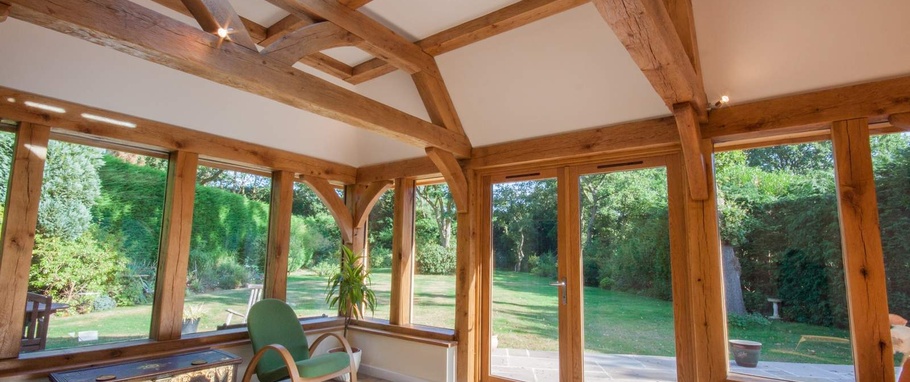
Myths abound with regard to the integrity of green oak in comparison to other building materials – but is there any truth in them? Here we put to rest six top myths about the properties of green oak to give builders and architects some food for thought when considering a timber-frame construction.
1. Dried oak is better for building frames than green oak
Almost all mainstream structural oak framing in the UK across the industry uses green oak, rather than kiln dried or air dried oak. This is the case for a number of reasons.
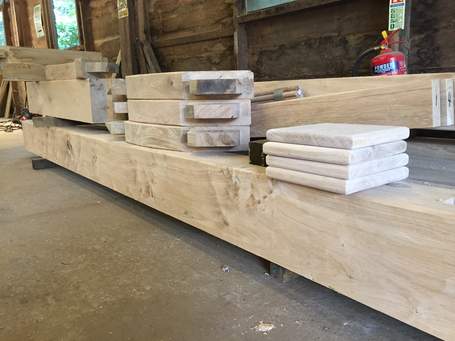
Green oak timber will have been felled in the past 18 months, so while it is true that green oak frames will gradually lose moisture content and shrink over time, particularly in the first couple of years, it is not true that this natural seasoning process will weaken the structure. On the contrary, oak becomes harder and stronger as it dries. Oak is naturally low in weight but high in density (with a density of about 0.75 g/cmᶾ and a strength/weight ratio superior to steel’s) with excellent load-bearing capabilities. Oak always shrinks in width, never in length, so there is no risk of a tennon ‘slipping’ out of a mortice.
With regards to splits and cracks, these have very little effect on the structural integrity of the frame. As the grading system limits the angle at which the grain runs along any one piece of oak, the splits which open up along the grain as the fibres dry and separate do not traverse the beams’ grain and thus do not weaken it.
Our clients are always informed that the splits (referred to as shakes) will be a typical feature of the oak as it dries out over the years and in fact this is a characteristic they are actually looking for.
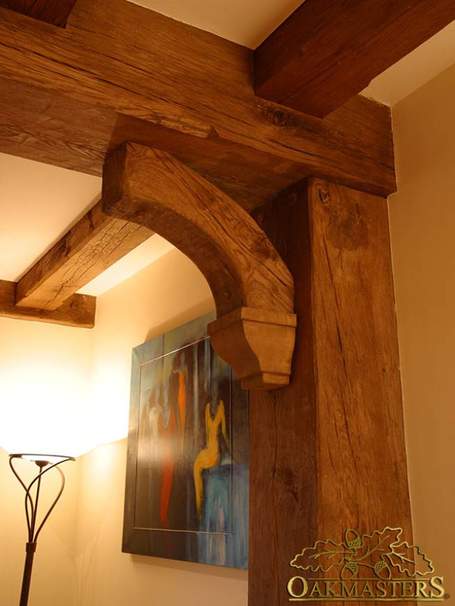
Furthermore, a good design will allow for shrinkage, ensuring that joints in the frame become stronger and tighter during this process.
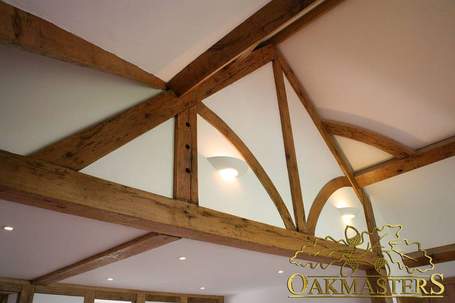
3. The wood will be vulnerable to infestation and rot
If this myth is understandable, it’s also complete rot! Oak is extremely resistant to insect attack in the UK and can be exposed externally to our weather without any need for artificial coatings. For wood to rot there must be a serious and sustained damp problem. If the moisture content of the wood is less than 20%, fungi growth will not occur.
Wood is naturally ‘breathable’, allowing humidity and moisture to pass freely through it, unless covered in materials such as cement (rather than lime-based) render and synthetic paints. But a well-designed and well-built oak-framed building, with the timbers located appropriately, will be problem-free. Beyond that, all that’s needed is the usual vigilance against damp arising from poorly maintained downpipes or gutters.
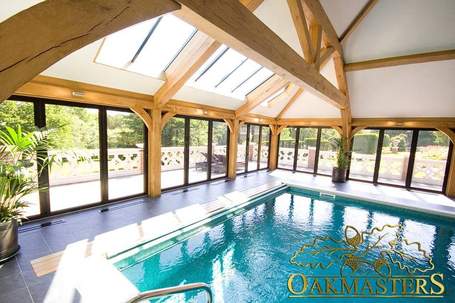
4. Cutting down trees is environmentally unfriendly
If trees were cut down and not replaced, this would be true. But all the green oak we use, and indeed almost all the oak used by builders in Britain, is sourced from sustainable plantations where there is replanting. And those newly planted trees, being more vigorous in growth, absorb more CO₂ than mature ones.
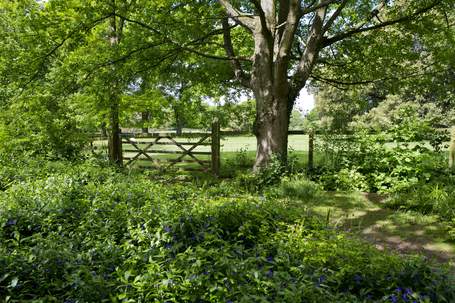
More than this, wood has the lowest CO₂ cost of any commercially available building material. For every cubic metre of wood used instead of other building materials, about one tonne of CO₂ is saved from the atmosphere. Three tonnes of CO₂ can be saved from the 20-tonne CO₂ footprint of a typical three-bedroom detached house by using a timber frame. Also, the embodied energy of wood – the energy used in its extraction, transportation, production and delivery – is significantly lower than that of alternative materials such as steel, concrete, and brick.
Furthermore, using wood also helps to save energy over the life of a building as its cellular structure provides exceptional thermal insulation.
For further information, you may be interested in reading our blog about Building with Sustainable Sources.
5. Oak-framed buildings are not very fire-resistant
It might sound surprising, but in the unlikely event of a fire, oak will perform better than many other building materials. With its low thermal conductivity, oak chars and burns slowly, retaining its load-bearing capabilities longer than other materials and so increasing the chances of fire detection and building evacuation. (In truth, the principle fire hazard in a building is often the soft furnishings!)
Wood’s behaviour in fire is also predictable, which means it can be forecast and calculated. And oak-framed buildings, like all others, must comply with the fire safety requirements set by the Building Regulations, which define the minimum required period of fire resistance and control of the surface spread of flame. Pegged wooden joints have been proven not to reduce the period of resistance or load-bearing capability.
6. More maintenance will be needed than with a hidden-frame building
As wood’s natural habitat is the great outdoors, it is of course naturally weather-resistant. There are treatments such as Sikkens or wax oils you can use to maintain the original colour, but once you start on it in the outside environment it will need to be repeated annually. Over time, sunlight will turn external timbers an attractive silvery grey while oxidisation make the internal wood more honeyed, which in our view is much nicer.
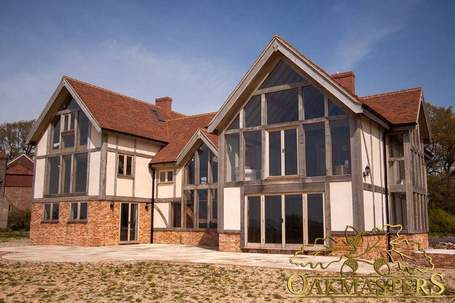
Otherwise, maintenance is the same as any other building’s to prevent water or dampness penetrating the building’s envelope.
From design and planning regulation to supply, construction and after-sales support, at Oakmasters we are delighted to offer any assistance we can to help you add value to your home using green oak.
Call us today on 01444 455455 or download one of our brochures for more information.
We'd love to hear about your oak framed project. Call us today on +44 (0) 1444 455 455 +44 (0) 1444 455 455 for a no obligation estimate. Alternatively, complete the form below and we will be in touch.